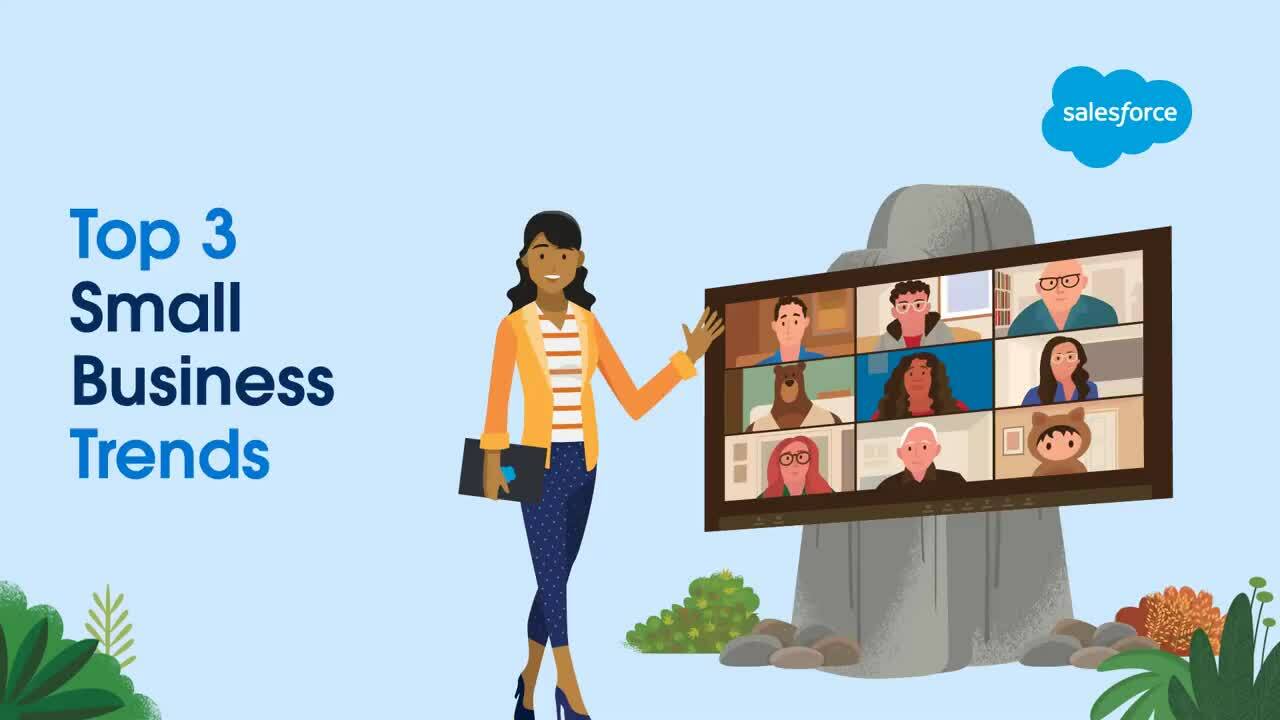In the 5th edition of the Small and Medium Business Trend report, The Harris Poll spoke with 2,500 SMB leaders across the world. The results illustrated common challenges, plus similar links between revenue growth and different approaches, from customer engagement to flexible working.
Some trends were new, but others weren’t. When it comes to areas like technology investment, back-to-back editions of this research have pointed to greater investments from growing SMBs when compared to stagnant or declining ones.
We’re sure 2022 will have some surprises. But for the SMBs looking for new-year priorities, we’re predicting these three trends will determine who’s staying ahead of the curve and who isn’t.
1. A focus on shifting customer expectations
The pandemic has only accelerated customers’ digital habits and their appetite for seamless, omnichannel experiences. It’s little wonder that survey responses show that 69% of SMBs in Australia and New Zealand plan to offer contactless services permanently. And more than one in three SMBs have increased customer engagement channels.
But customers don’t just expect more channels, they expect convenient, personalised experiences with your business, any time, anywhere. SMBs say that keeping up with demand and personalisation are two of their biggest customer engagement challenges, ensuring that SMBs will need to keep finding scalable solutions for meeting new expectations.
That’s why we’re confident 2022 will see an even greater focus on reshaping business operations around customers’ evolving needs and expectations.
2. A focus on happy employees
With the Great Resignation in full swing, customers aren’t the only ones with changing expectations. And the research reveals that flexible working arrangements are now the number one employee expectation — with growing SMBs more likely to provide this.
Great customer experiences often depend on employees who are equipped with the data, tools and approaches that help them do their jobs well. So growing focuses on customer expectations and happy employees will go hand-in-glove.
3. Investments in technology that empower customers and employees
Underpinning these trends are digital solutions that empower both groups. Changes like self service, AI and chatbots can help SMBs’ employees meet demands while customers are freed to find answers on their own. And solutions in marketing and sales empower employees through better, more holistic customer data, helping them support customers when they need it most.
It makes sense, then, that growing SMBs have invested most in customer service technology, followed by marketing and sales technology.
But there’s simply been a digital shift across the board, with more than half of survey respondents saying they wouldn’t have survived the pandemic if they had been using technology from 10 years ago.
No matter what’s in store for 2022, we’ve got a hunch that continued digitisation and building out flexible tech foundations will be key to future success.
























